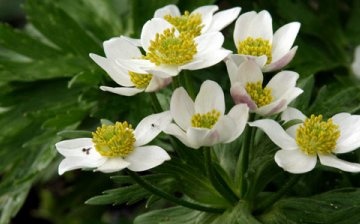Anemones growing
Anemone is a very simple and at the same time beautiful flower. In nature, there are dozens of varieties of this flower. This plant is suitable for growing both on estates and at home. Let's take a look at growing and caring for anemones.
This plant is not particularly demanding on the soil, the main thing for anemones is good drainage. Because it does not tolerate a large accumulation of moisture at all. During the growth and flowering of this plant, mulching must be carried out, it is best to carry it out at least twice.
During growth, the flower responds very positively to fertilization with organic (except fresh manure) and mineral fertilizers. The place for the anemone should be sunny, but you should not plant it in the sun. With proper care, the plant can bloom from May to late fall.
We have already spoken about excessive watering, but it is not worth overdrying the plant either. In drought, the plant withers and may die. Propagate anemone by seeds or by dividing the rhizome. It is best to propagate by seeds.
In late autumn, you need to cover this plant for the winter. Cover it with peat or garden compost. You can also dig up the root of the anemone and store it all winter in a basement at a slight above-zero temperature.
The rhizomes are planted back into the ground in late spring. The soil should be well warmed up, and there should be no spring frosts. It is better, of course, to insulate the anemones, and not to transplant them. This plant does not respond very well to transplantation, and can take a long time to recover. Good luck with growing anemones and wonderful flowering.



